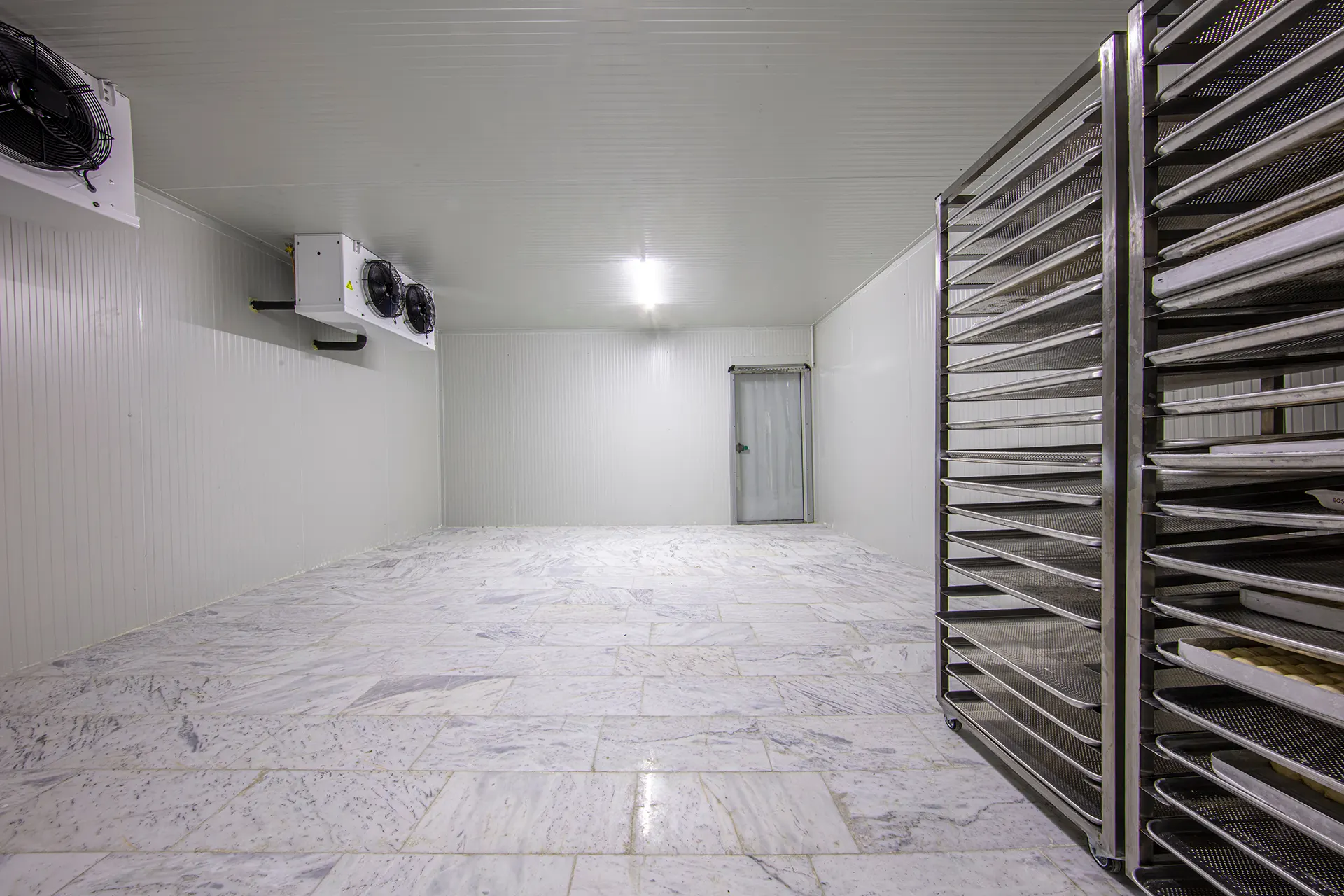A cold store is the ideal place to store temperature-sensitive, perishable items like food and pharmaceutical products, such as vaccines, at the right temperature. Cold stores, or cold rooms, use energy and should the electricity supply fail for whatever reason, the temperature inside can only be maintained for 2 hours. In this case study we discuss how Phase Change Material can extend this ‘back-up period’ to 32 hours, giving ample time to ‘save’ the temperature-sensitive products. Plus, how this can result in an annual energy saving per cold room of around €1.944!

A cold room is a cold/insulated room designed to maintain an artificially generated temperature range. These spaces are vital in retaining quality levels of, e.g., valuable medicinal products, medical devices and perishable food during storage.
However, in the event of power outage the temperature can no longer be maintained after as little as two hours. That gives very little time to tackle the problem at hand, and means of course that the cold rooms function autonomously for a short time only. This proved an interesting challenge for further research.
To ensure cold rooms stay at temperature for longer when external sources fail, tests were carried out with an energy accumulator designed to save and restore energy at any given time. This system is made up of enormous cooling plates filled with PCM (Phase Change Material). These plates are deployed homogenously in the cold room, in order to guarantee optimal return of the stored energy in the event of an emergency.
The tests were carried out in a cold room with a usable volume of 80.5m3, 280 PCM cooling plates weighing 4 kg and a built-in cooling capacity of 2 x 7kW. 30 sensors were placed to take the readings.
The tests showed that the autonomy of the cold room extended from 2 hours to at least 32 hours: the time that the cold room stays at the desired temperature without any energy consumption. On average, across the 30 measurement points this amounted to 42 hours even. Furthermore, the test was carried out in an empty cold room: if this had contained products too, the autonomous cooling time would have been extended by a few hours.
Moreover, this turned out to give an estimated annual energy consumption saving per cold room of €1.944, on an energy consumption totalling €5.832 (38,880 kWh valued at €150/MWh). Besides being a significant cost saving, this is also an environmentally-conscious solution.
PCM-filled cooling plates not only comprise an energy-saving outcome for cold rooms, but they also increase periods of autonomy. The cooling plates can also yield results in supermarket chilled food sections. Here the emphasis lies on energy saving and thus a reduction in energy costs.
By adding cooling plates to such sections, they absorb the temperature at night-time to then provide additional cooling during the day. With continual opening and shutting of the chiller doors, the cooling plates ensure a more stable interior temperature, which in turn demands less of the chiller. This in turn saves on expensive energy consumption.
Plus, the Phase Change Material solutions don’t just yield results at cold temperatures; the above-mentioned solution is similarly effective at temperatures above zero (ambient temperatures). For instance, if you need to store pharmaceutical/medical devices or living organisms in a room between 15 to 25°C. Nothing is beyond the realms of possibility.
Curious as to how you can save energy by using PCM? Please get in touch. Our proactive team of specialists are on hand to help.